Addressing Suicide Risks in Autism
Understanding and Combating Suicide in the Autism Community

A Critical Overview of Suicide Risks and Prevention in Autism
Autism spectrum disorder (ASD) significantly increases the vulnerability to suicidal thoughts and behaviors across all ages. Despite being a neurodevelopmental condition with high heritability estimates of 70-90%, ASD's complex genetic architecture intersects with environmental and psychosocial factors that influence mental health outcomes. This article explores the multifaceted nature of suicide risks in autistic populations, identifies early warning signs, discusses current challenges in screening and intervention, and advocates for autism-tailored prevention strategies, including innovative safety plans and community support systems.
Genetic Contributions and Their Relation to Suicide Risk in Autism
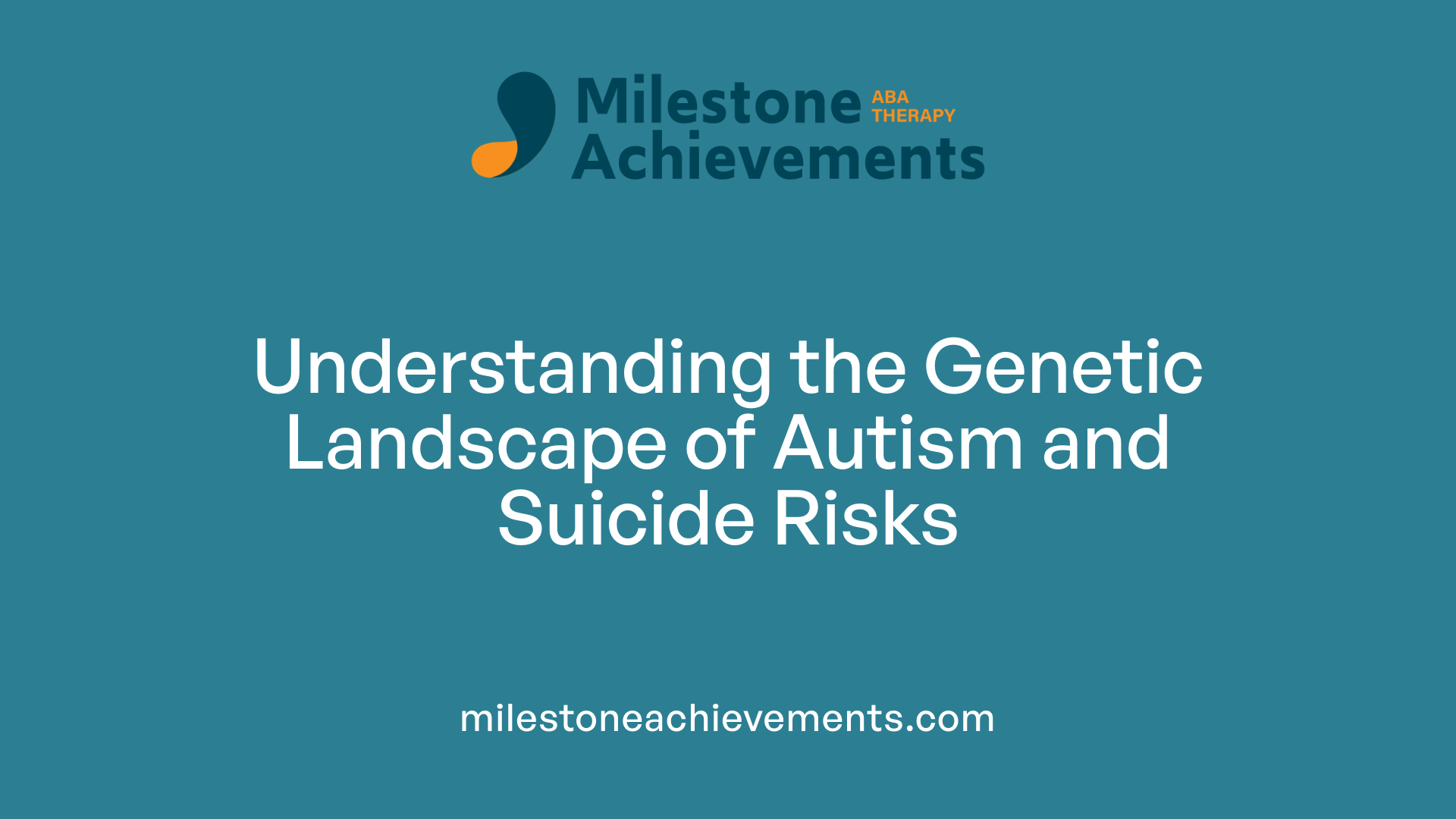
What is the estimated genetic contribution to autism and how does that relate to suicide risk?
Autism spectrum disorder (ASD) has a strong genetic component, with heritability estimates ranging between about 70% and 90%. This high heritability indicates that genetic factors are the primary contributors to the risk of developing ASD. Over 800 genes have been identified in association with autism, alongside multiple genetic syndromes such as fragile X syndrome, Tuberous sclerosis, and PTEN hamartoma tumor syndrome.
Genetic influences in ASD involve various types of alterations, including copy number variations (CNVs), gene mutations, and disruptions in neurodevelopmental pathways. For example, mutations in genes like SHANK3, NRXN1, and PTEN are known to alter synaptic development and neural connectivity, contributing to autism characteristics.
These genetic factors are complex and often overlap with other neuropsychiatric conditions, including intellectual disabilities, anxiety, depression, and attention deficit hyperactivity disorder (ADHD). Advanced genetic testing methods, such as whole-exome sequencing and chromosomal microarray analysis, help in diagnosing specific genetic causes and tailoring interventions.
Although there is no straightforward or direct genetic link between ASD and suicidal behavior, research suggests that genetic predispositions can increase overall vulnerability to mental health issues. Certain genetic profiles associated with ASD may also predispose individuals to conditions like depression or anxiety, which are known risk factors for suicide.
Environmental stressors, life experiences, and co-occurring mental health conditions interact with genetic vulnerabilities. For someone with ASD, this intersection may heighten the risk for suicidal thoughts or actions, especially during periods of increased stress or mental health crises.
Understanding the genetic architecture of ASD is therefore essential not only for diagnosis and personalized treatment but also for recognizing potential vulnerabilities. This knowledge can help clinicians in early intervention efforts and in developing strategies to address associated risks like depression and suicidality.
Ultimately, ongoing research continues to uncover the complex genetic landscape underlying autism and its connections to mental health outcomes. Building this understanding is a vital step toward improving comprehensive care and preventive strategies for autistic individuals at risk.
| Aspect | Details | Additional Notes |
|---|---|---|
| Heritability | 70-90% | Indicates strong genetic influence |
| Major genes involved | SHANK3, NRXN1, PTEN | Affect synaptic development |
| Types of genetic alterations | CNVs, mutations | Disrupt neurodevelopment pathways |
| Overlap with other conditions | Anxiety, depression, ADHD | Increases mental health vulnerability |
| Genetic testing | Whole-exome, microarray | Facilitates diagnosis |
Elevated Suicide Risks and Warning Signs in Autistic Individuals
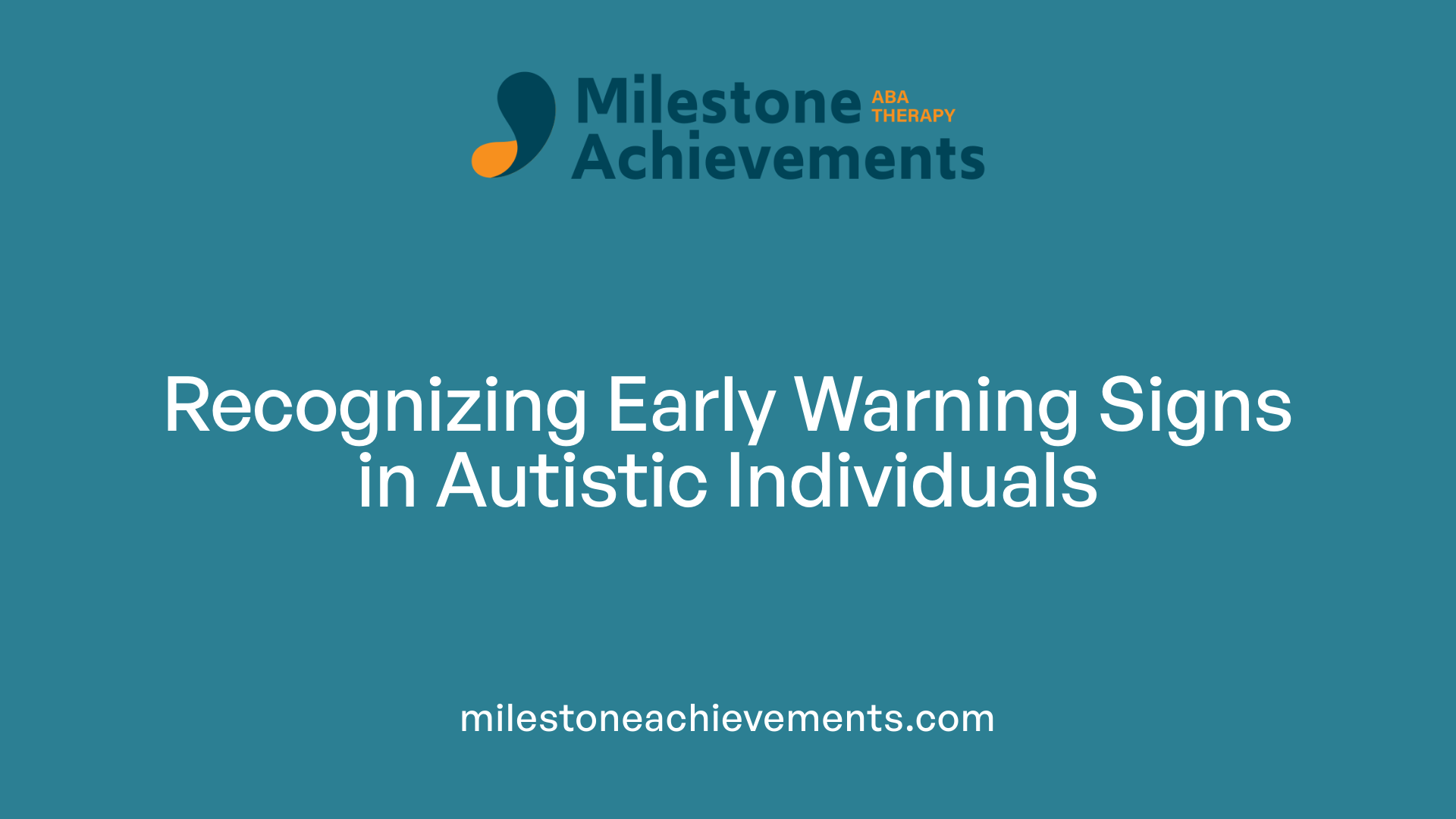
What are the risk factors and warning signs for suicide in autistic individuals?
Autistic individuals are at a notably higher risk for suicide due to a variety of mental health challenges. Conditions such as depression, anxiety, trauma, and co-occurring psychiatric disorders significantly increase their vulnerability. Social isolation, loneliness, and experiences of bullying or trauma further contribute to this heightened risk.
Recognizing warning signs is crucial. These include abrupt withdrawal from social activities, sudden loss of communication skills during emotional distress, and increases in self-harming behaviors or agitation. Behavioral changes such as reckless actions, sleep disturbances, and signs of emotional overload—like despair or feelings of being a burden—may also appear.
Verbal cues are equally important: expressions of hopelessness, a sense of no purpose, or outright statements about death or suicide should never be ignored. Some individuals may show a focused interest in death or suicidal thoughts, or they might be giving away possessions.
Behaviorally, signs like seeking means (e.g., access to sharp objects or medication), engaging in impulsive actions, or showing reckless disregard for safety can indicate an increased risk. Since autistic individuals often interpret and express their feelings differently, these signs can be subtle or masked, making tailored assessment and vigilant observation essential.
Understanding these warning signs involves appreciating the communication styles and behavioral patterns unique to each individual, emphasizing the importance of customized approaches in intervention and support.
What are the early indicators of elevated suicide risk in autistic youth and adults?
Early signs of increased suicide risk in autistic populations often manifest through emotional and behavioral changes. Expressions of hopelessness and despair are common indicators, particularly when accompanied by social withdrawal or a retreat from previously enjoyed activities.
In youth and adults alike, sudden shifts in mental health status—such as intensified self-harm, increased rumination on death, or persistent anxiety—should raise concern. Difficulties in communication may hinder the recognition of these signs, especially in non-verbal individuals or those with limited expressive language.
Specific cues include the expression of suicidal thoughts during conversations, or through non-verbal gestures, drawings, or changes in routine behaviors that suggest premeditation. For example, an individual might start discussing or making plans involving lethal means or verbalize feelings of being trapped or a burden.
It’s also important to observe if there is an escalation in behaviors related to seeking access to dangerous objects or substances. Sudden behavioral shifts, such as increased agitation or emotional exhaustion, can be subtle but critical early warnings.
Early detection relies on attentive observation and understanding of each person's baseline behavior and communication style. Prompt response to these indicators can prevent escalation and facilitate timely intervention, highlighting the importance of ongoing mental health support tailored to the needs of autistic individuals.
Understanding the Relationship Between Autism and Suicide
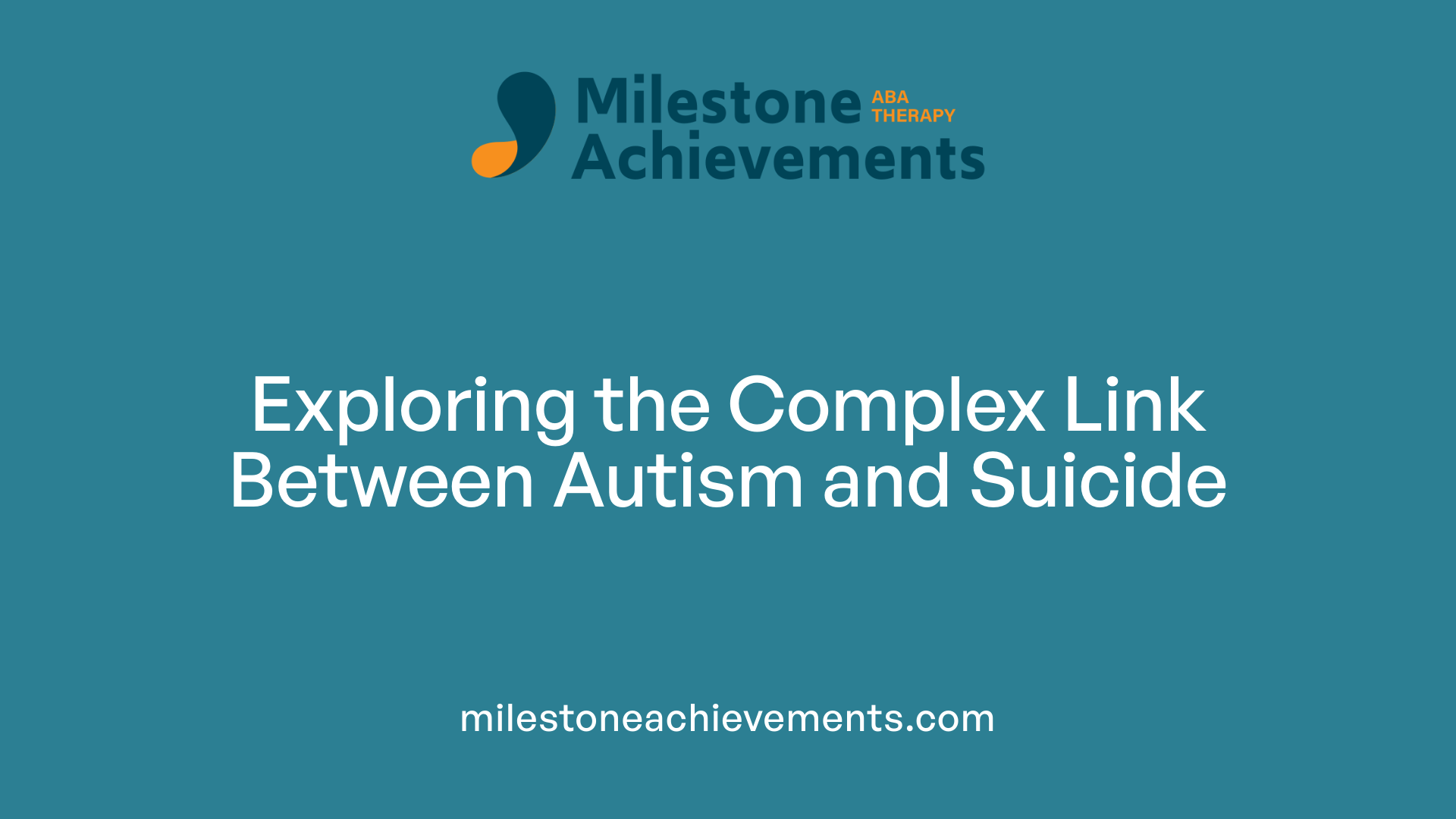
What is the relationship between autism and suicide risk?
Research consistently shows that autistic individuals face a significantly higher risk of suicidal thoughts, attempts, and death compared to the general population. Studies estimate that between 11% and 66% of autistic adults have contemplated suicide, while approximately 18% to 35% have attempted it. Autistic women are especially vulnerable, with evidence indicating they are about 13 times more likely to die by suicide than non-autistic women.
Several factors contribute to this elevated risk. Social isolation, difficulty in communication, and co-occurring mental health conditions such as depression and anxiety play substantial roles. Traits like camouflaging—where autistic individuals mask their symptoms to fit social expectations—along with alexithymia, or difficulty in identifying and expressing emotions, also increase vulnerability.
Early onset of suicidal ideation among children with autism and challenges in recognizing warning signs complicate prevention. High cognitive ability, paradoxically, can also be associated with increased risk, especially when combined with the stress of social camouflage or academic pressures.
Overall, understanding these risks highlights the importance of tailored screening, early detection, and specialized mental health support to prevent suicidality among autistic populations.
Are there differences in suicide patterns among autistic men and women?
Autistic women are at a markedly different and more alarming risk of suicide than their non-autistic counterparts. They are about 13 times more likely to die by suicide, a striking contrast to the typical pattern in the broader population where males usually have higher suicide rates.
This heightened vulnerability in autistic women is linked to unique challenges. They often engage in intense camouflaging behaviors, hiding their struggles to meet social norms, which can lead to increased emotional exhaustion and depression.
Moreover, societal stigma, gender-based expectations, and intersecting mental health issues such as trauma and shame contribute to this disparity. Recognizing this pattern underscores the need for gender-sensitive screening tools and prevention strategies that address the specific experiences of autistic women.
What specific challenges hinder effective screening and management of suicide risk in autism?
Screening and managing suicide risk in autistic individuals face several obstacles. First, many existing assessment tools are not validated for autism, making it difficult to accurately identify suicidal ideation. Communication differences, sensory sensitivities, and atypical emotional expressions mean some autistic individuals may not respond to standard questions or exhibit typical signs.
This can lead to underdiagnosis or misinterpretation of distress. For example, a non-verbal autistic child might show signs of withdrawal or self-injury without articulating suicidal thoughts.
Furthermore, there's a significant gap in evidence-based interventions tailored for autistic individuals. Safety planning, crisis management, and post-risk care are often unadapted, reducing their effectiveness. Stigma within healthcare and society, limited access to specialized mental health services, and a lack of clinician training add to these challenges.
To improve screening and intervention, research efforts are needed to develop autism-specific assessment tools and therapeutic protocols. Training healthcare providers and caregivers to recognize subtle signs and incorporate understanding of autism's unique presentation can also better support at-risk individuals.
The Importance of Autism-Adapted Safety Plans and Support Resources
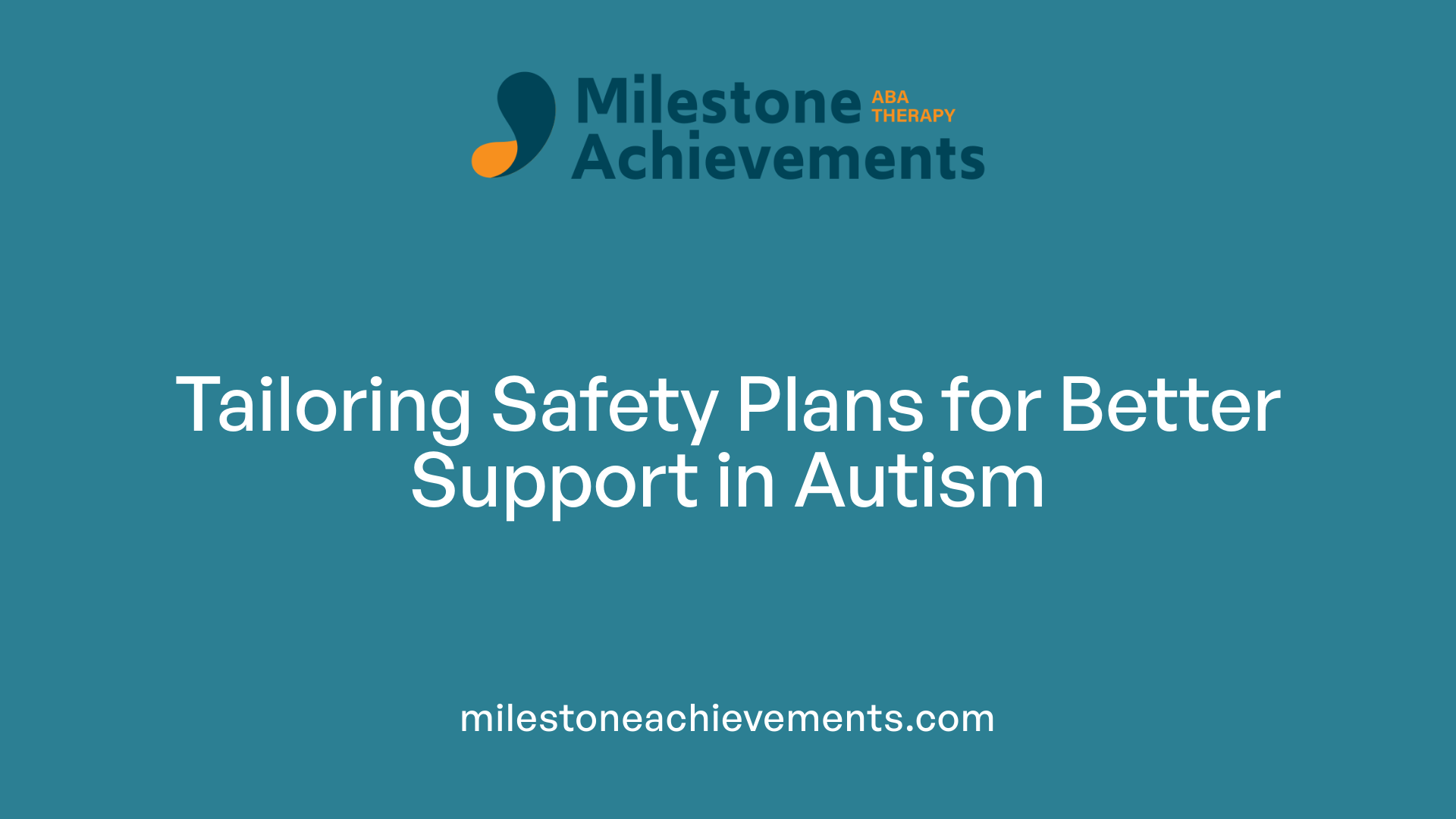
Why is developing autism-specific safety plans and support resources important?
Autistic individuals are significantly more vulnerable to self-harm and suicidal behaviors compared to the general population. Despite this elevated risk, there has been a lack of tailored interventions designed to meet their specific needs. Developing autism-adapted safety plans is a crucial step in closing this gap.
These personalized plans take into account sensory sensitivities, communication differences, and individual risk factors unique to each person. By doing so, they become more accessible and effective in helping autistic individuals navigate crises. Most autistic adults and their supporters report that these adapted safety plans are not only acceptable but also practical and helpful. Their positive feedback underscores the importance of customizing safety strategies to align with the individual's cognitive, sensory, and emotional needs.
Research indicates that autism-specific safety plans are safe and feasible, with ongoing studies aiming to evaluate their effectiveness in reducing self-harm and suicidal behaviors. Implementing such tailored resources enhances crisis management, supports mental health, and can ultimately lead to better outcomes by ensuring that interventions are suitable and responsive to this population’s unique circumstances.
How do autism-adapted safety plans differ from standard plans?
Compared to traditional safety plans, autism-oriented plans are specifically designed to accommodate the communication styles, sensory sensitivities, and interests of autistic individuals. These adaptations include:
- Use of visual aids such as pictures, symbols, or visual stories that make instructions clearer.
- Employment of concrete language rather than abstract concepts, reducing misunderstandings.
- Inclusion of sensory considerations, like managing overload through specific coping techniques.
- Personalization around circumscribed interests, which can serve as calming or engagement tools.
- Active involvement of caregivers and support persons to ensure consistent implementation.
These modifications help make safety plans more understandable and relevant, thereby increasing the likelihood that autistic individuals can follow through with them during crises. By tailoring strategies and involving support networks, autism-adapted safety plans enhance the individual's ability to manage distress effectively, ideally reducing the incidence of suicidal behaviors and self-injury.
Impact of Camouflaging on Mental Health and Suicidality in Autistic Adults
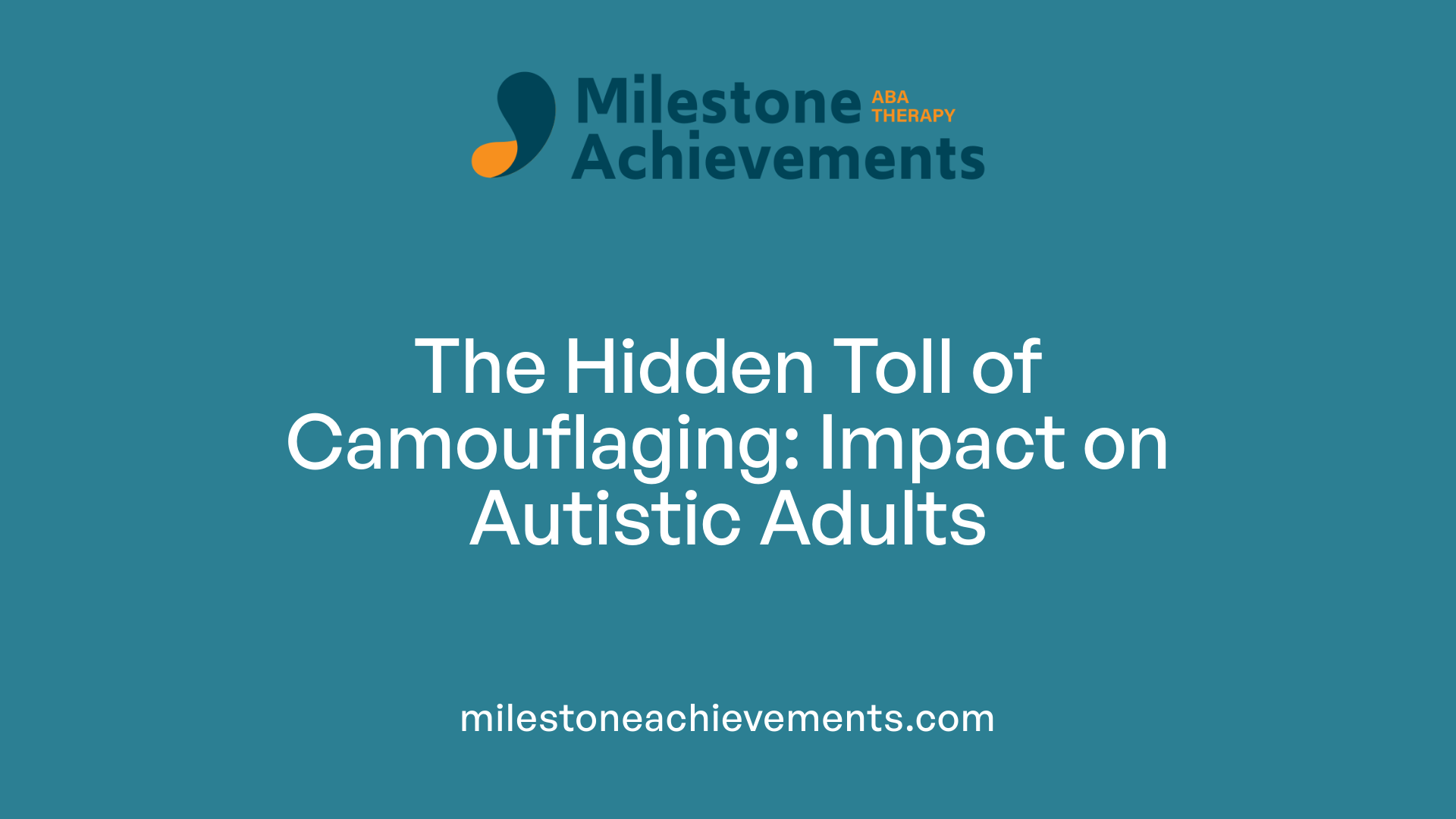
What is camouflaging or masking in autism?
Camouflaging or masking refers to the strategies autistic adults use to hide or modify their social behaviors to blend in with neurotypical standards. This often includes suppressing natural autistic traits such as stimming, masking facial expressions, or rehearsing social scripts. The primary goal is to appear more socially acceptable or to avoid negative reactions from others.
This adaptive behavior allows some individuals to navigate social environments more smoothly. However, it often requires significant mental effort and emotional labor.
How does camouflaging impact mental health and suicidality?
The act of continual masking places a heavy psychological burden on autistic adults. Many report feeling exhausted, overwhelmed, and emotionally drained from maintaining their social masks. This persistent effort can contribute to feelings of inauthenticity and loss of self, fostering a sense of disconnection from one's true identity.
Quantitative research shows a strong link between high levels of camouflaging and increased mental health challenges. Notably, higher camouflaging scores correlate with elevated instances of depression, anxiety, and suicidal thoughts.
Certain types of camouflaging, especially 'assimilation'—where individuals try to fit into social norms—are particularly associated with higher suicidality. Participants often describe camouflaging as a source of hopelessness, with some seeing suicide as a 'safety net' or a way to escape emotional overload.
The ongoing psychological strain makes it difficult for individuals to seek help, as they might not express or even recognize their distress openly.
What are the social and clinical implications?
Camouflaging significantly affects clinical mental health assessments. Because autistic adults often hide their distress, clinicians may fail to recognize signs of emotional suffering or suicidality. This can lead to underdiagnosis, misdiagnosis, or delayed interventions, which diminishes treatment effectiveness.
From a social perspective, camouflaging fosters loneliness and social rejection. While it may temporarily improve social interactions, it ultimately results in feelings of failure and social disconnection, further increasing mental health risks.
These implications emphasize the importance of training for clinicians and caregivers. Recognizing camouflaging behaviors through subtle cues or conversation can improve early detection of distress.
Developing assessment tools tailored to autistic adults, which consider their unique ways of expression, is vital. Such tools can facilitate earlier support and targeted interventions.
Moving forward: importance of awareness and support strategies
Understanding camouflaging is crucial for providing effective mental health support to autistic adults. Raising awareness about its impact, integrating autism-specific assessment practices, and creating safe spaces for authentic self-expression are necessary steps.
Supporting autistic adults in reducing reliance on camouflaging—through community, peer support, and acceptance—can help alleviate emotional exhaustion. Additionally, research into interventions that directly address the stressors associated with masking holds promise for reducing suicidality in this vulnerable population.
By acknowledging the complex toll that camouflaging takes on mental health, clinicians and society can better tailor their approaches to foster wellbeing and resilience among autistic adults.
Enhancing Support and Future Directions in Autism Suicide Prevention
Addressing suicide risks within the autism spectrum requires a multifaceted approach, including improved screening methods, tailored safety plans, community support, and ongoing research. Recognizing the unique risk factors faced by autistic individuals—such as camouflaging, high cognitive ability, and co-occurring conditions—is essential. Healthcare professionals need autism-specific training and resources to better identify early warning signs and implement effective interventions. Developing and validating autism-adapted safety plans and increasing access to mental health services are vital steps to reduce the alarming rates of suicidality. Building awareness about the distinctive challenges in this community can foster greater understanding, reduce stigma, and ultimately save lives. Future initiatives should focus on longitudinal studies, innovative interventions, and community-based programs designed to empower autistic individuals and their support networks, ensuring their mental health and safety are prioritized.
References
- Safety Planning for Suicidality in Autism: Obstacles, Potential ...
- [PDF] Suicide and Autism, a National Crisis.
- 8 Critical measures to counter suicide | Autism Speaks
- Autistic People are Thinking About, and Dying by, Suicide at High ...
- Camouflaging and suicide behavior in adults with autism spectrum ...
- Suicide risk in autism | Autism Speaks
- Suicide and autism | Autistica







